
When you’ve waited all season to taste your first tomato from your very own harvest, it can be incredibly distressing to find out the skin of the fruits has become thick, tough and unpleasant to eat. Although it’s quite a common problem, it’s not one many gardeners consider until it is too late.
Before harvest time comes, take a look at these four causes of thick skins on your tomatoes. Apply the prevention tips to make sure you never have to deal with these problems in the garden or the kitchen.
Variety
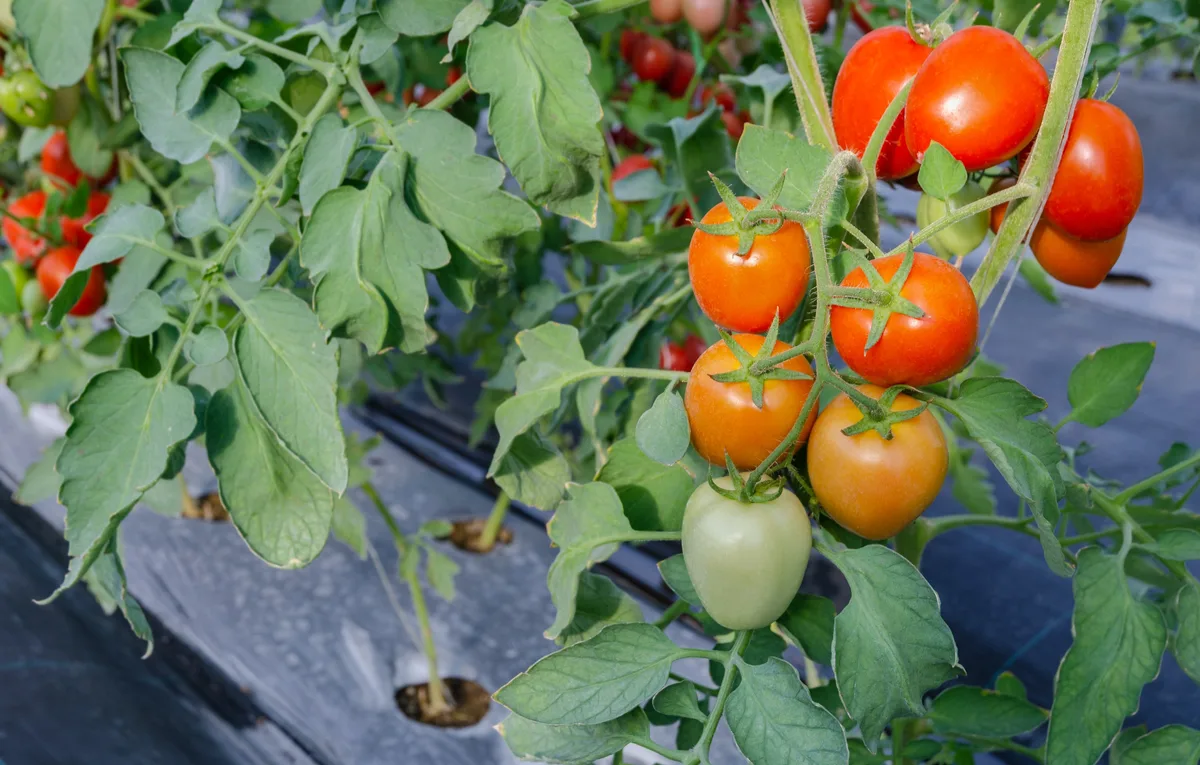
The first factor causing tomatoes to have thick skins, and not really one you can fix or change, is the variety. Some tomato types simply have thicker skins than others, either because they naturally grow that way or because they have been bred that way.
Those with thicker skins are usually hybrids rather than heirlooms, but as always there are exceptions to this rule.
Roma tomatoes are known for their thicker skins, making them ideal for canning and drying due to their stronger structure. Some plum tomatoes, such as San Marzano, are the same. Any type labeled resistant to cracking is also bound to have thicker skin that can withstand more moisture pressure without breaking.
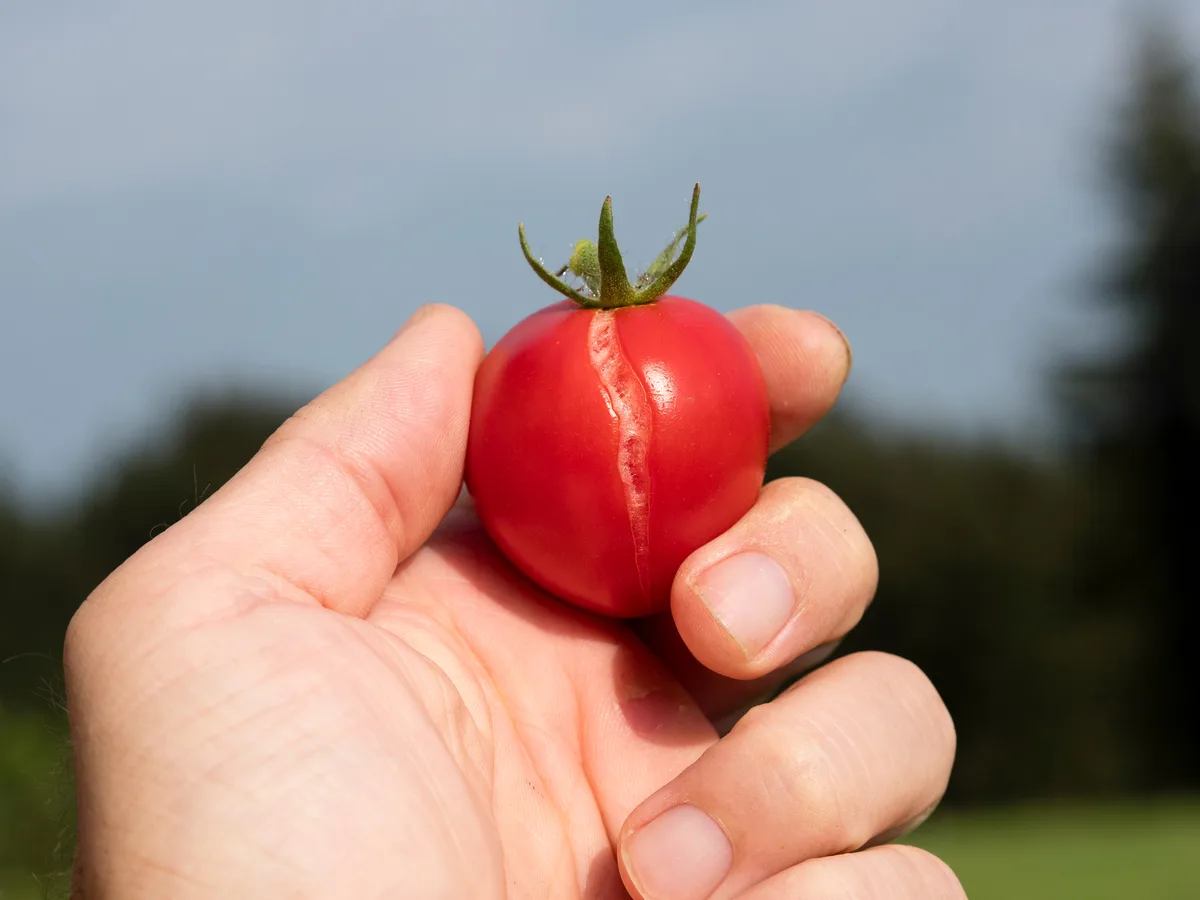
In these cases, thick skins aren’t a bad thing. They can be very useful if you find your tomatoes frequently cracking season after season. They are also great for preserving and can better withstand handling and transportation without facing too much damage. But, if you don’t want your tomatoes to have thick skins, avoid these varieties and perhaps try an heirloom variety instead that is more likely to have thinner skin.
High Temperatures & Sun
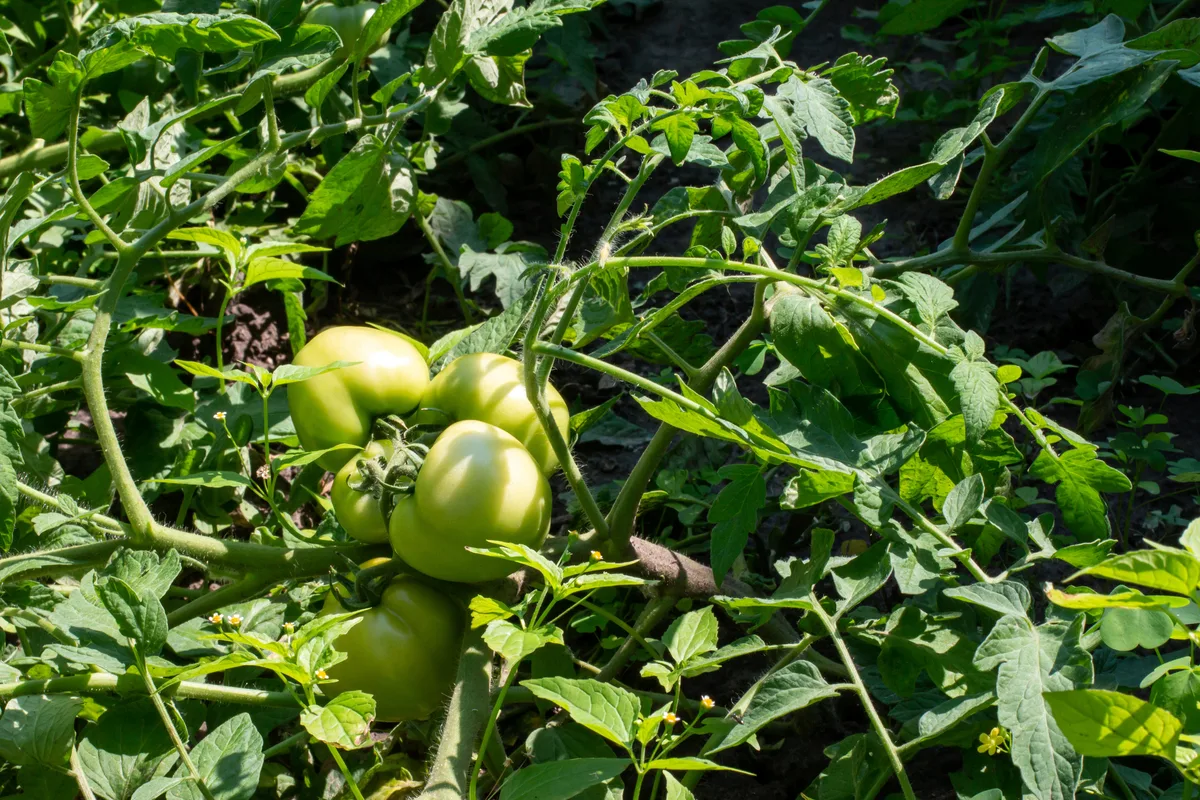
Tomatoes love warmth and sunlight, but too much of it is not always a good thing.
When temperatures remain high for long periods (85F and above) or the sunlight is very intense, your tomatoes may develop thick skins to protect themselves from sunscald. The lack of moisture when temperatures are higher can also cause skins to thicken to preserve moisture and prevent cracking.
High temperatures can also slow the ripening process, leading to a problem known as green shoulders. If not rectified, the uneven ripening will cause certain parts of the tomato to have thicker or tougher skin and flesh than others.
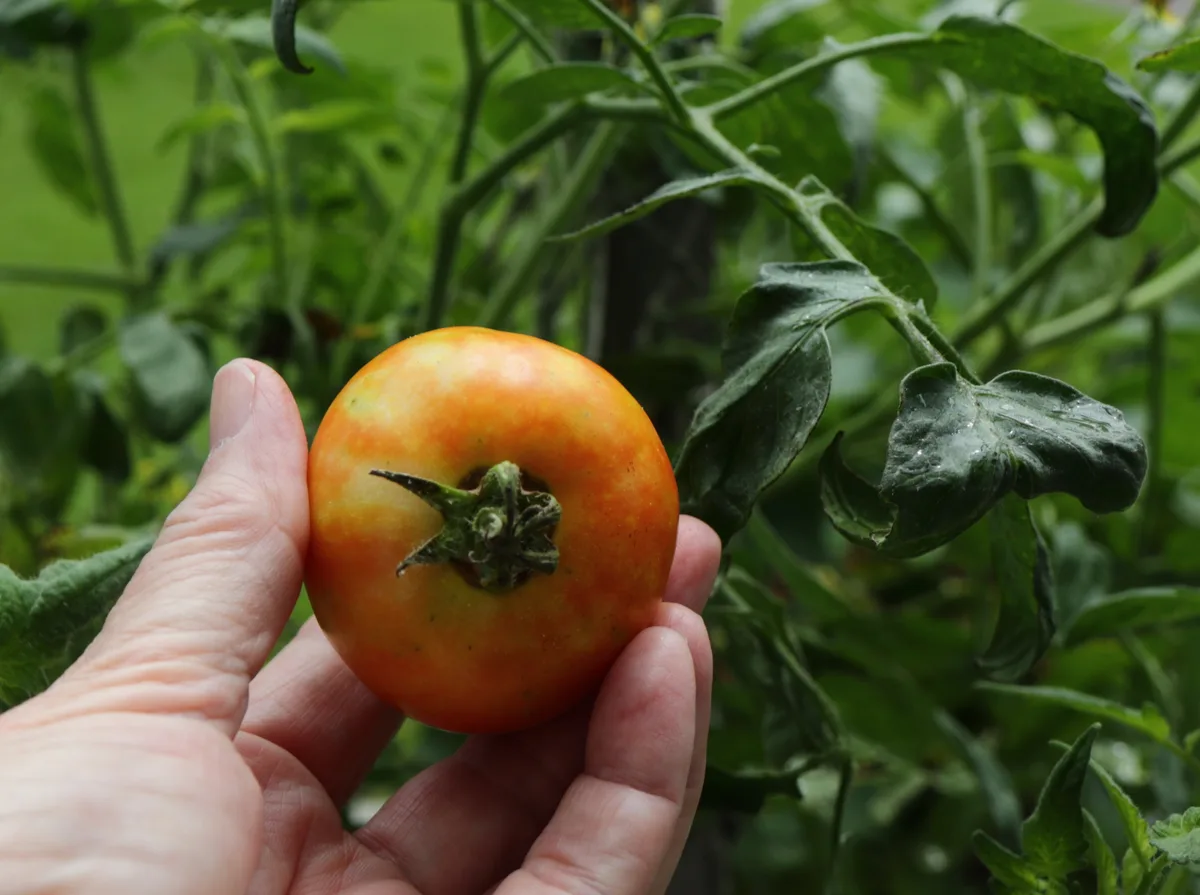
The easiest way to resolve this problem is to provide shade during the hottest parts of the day – usually midday to early afternoon. Plant your tomatoes in a prime position or add a shade cloth at the right angle to let just enough sun in in the mornings. Also ensure they are well watered when temperatures rise to avoid any unnecessary stress.
Related Reading: How To Protect Tomato Plants From Extreme Heat
Underwatering
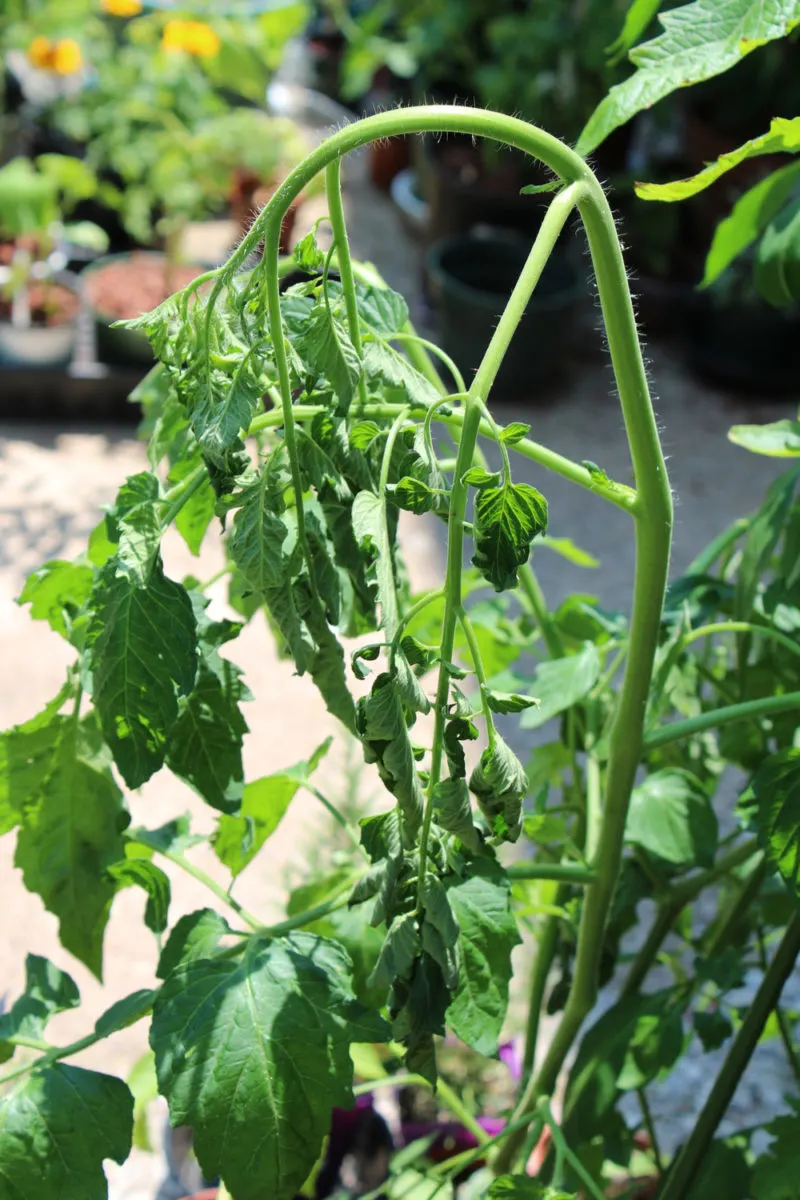
Underwatering tomatoes is a crucial mistake that can cause a world of problems. One missed watering might not do that much damage, but a continual lack of moisture for these water-loving plants will cause intense stress.
One of the responses to this stress is thick skin. When these plants lack moisture consistently, they begin to go into survival mode to protect themselves. In an effort to conserve moisture they develop thicker skins to keep the water inside the fruits. The fruits can also stop growing in size and may swell once the plant is watered again, leading to cracking.
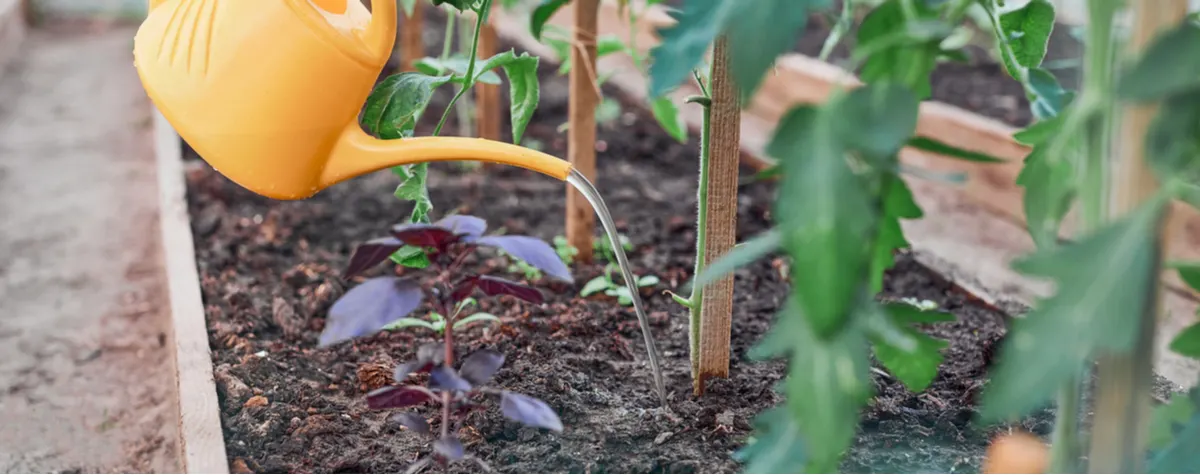
Ensure the soil is consistently moist and never dries out completely. Check frequently when temperatures rise or when there is limited rain to avoid prolonged dry periods. You can also add a layer of mulch to the soil to conserve moisture and keep the roots cool. For a rundown of which mulch to use and how much to apply, take a look at our complete mulching guide here.
How you water is also important. All water should only make contact with the soil, not the leaves or fruits. That goes a long way to preventing the next cause of thick skins – diseases.
Disease
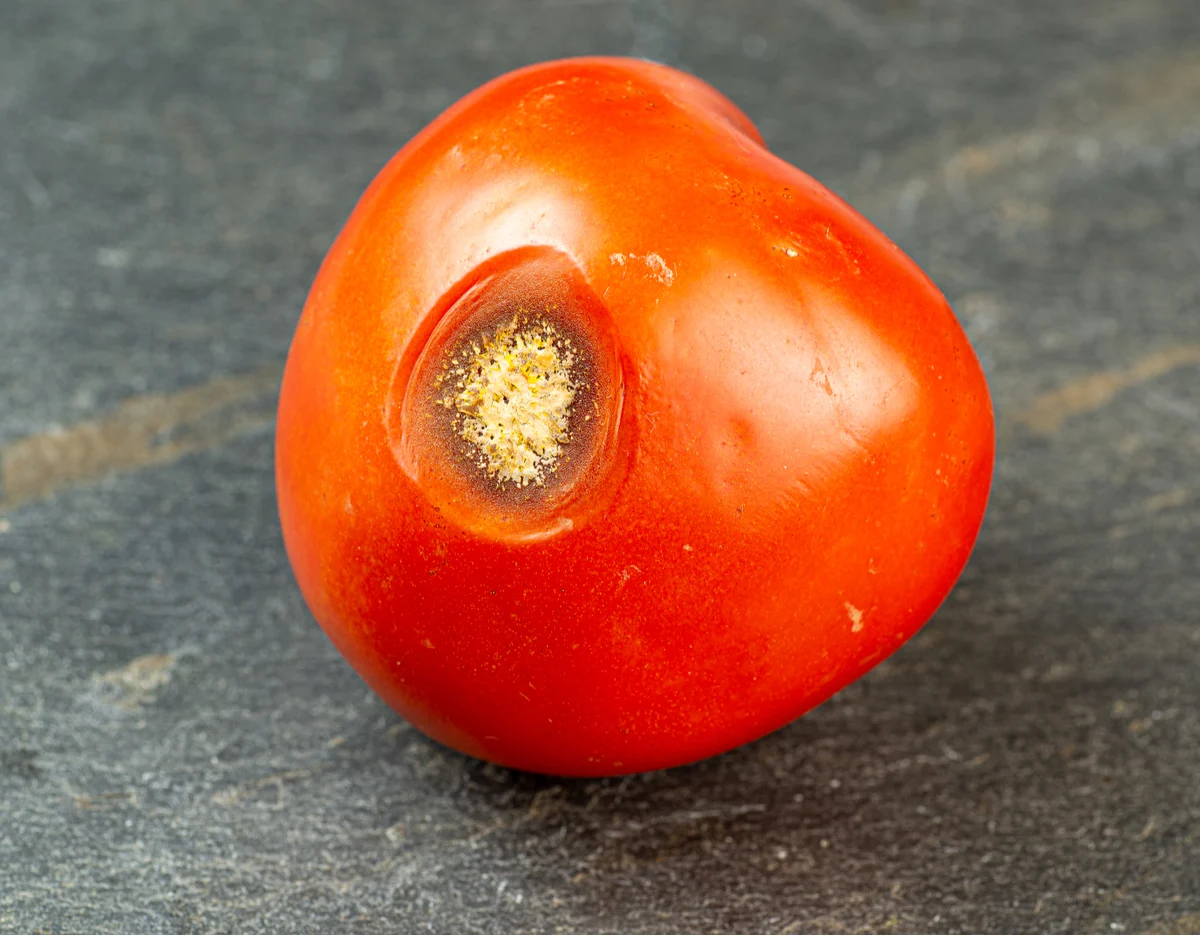
Tomatoes are susceptible to many diseases, meaning there is a lot for gardeners to watch out for. Each disease has its own signs, but two in particular lead the skins of the fruits to become thicker.
The first of these is Anthracnose. This fungus infects the fruits of your tomatoes, developing leathery and discolored patches on the skin. Once affected, the fruits will not go back to normal. It’s important to avoid this disease by watering correctly and keeping the plants healthy.
Physical damage can also make them more vulnerable. Avoid bruising or cutting the fruits to limit your chances of Anthracnose settling in.
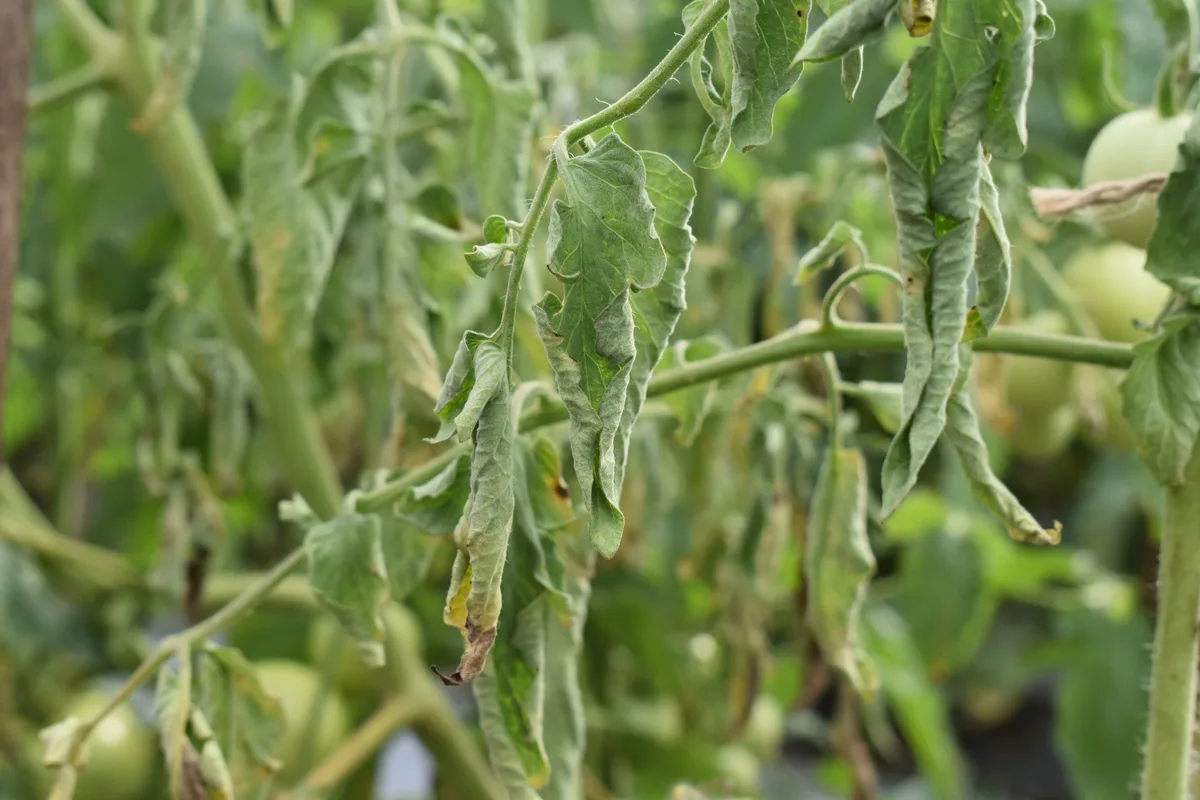
Curly Top Virus is another problematic disease, carried to your tomatoes by pests in the garden. You’ll notice the signs in the leaves before the fruits as they begin to turn yellow and curl. Due to the stress, the fruits will start to ripen too early, causing them to have tough and uneven skin.
Follow the same disease-prevention tips and immediately remove any infected plants to stop the problem from spreading to the rest of your garden.
When you’ve worked so hard to grow an abundance of tomatoes, it can be disheartening to find them with tough, thick skins that make them unpleasant to eat. Choose the right variety and follow these preventative tips to avoid any of these problems in the future.
